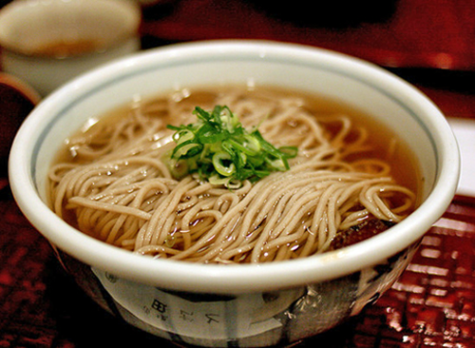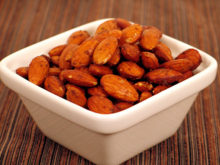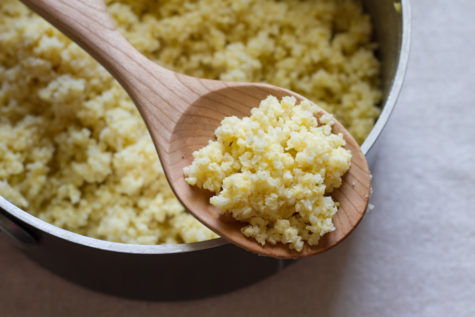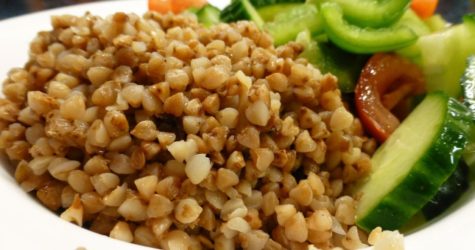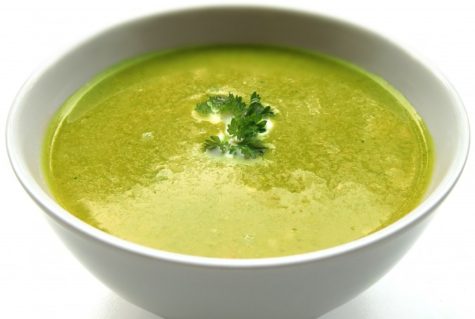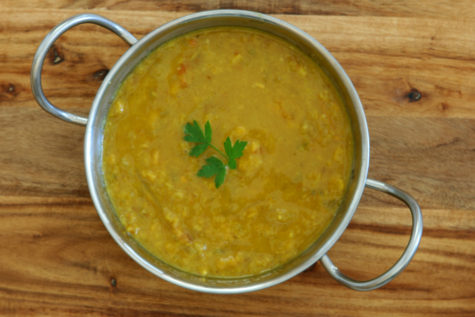Simple Boiled Noodles
Pasta is made from grain and can be used as a base for a meal. When using noodles with reduced or no wheat, use the shock method. Buckwheat (soba), corn, and rice noodles are delicate. Shocking allows the noodles to cook thoroughly and gently. The cold water temporarily halts the cooking of the outside of the noodles so the inside of the noodles can catch up.
- 4 quarts of water for up to 16 ounces of noodles
- ¼ tsp sea salt for 4 quarts of water, for unsalted noodles
Procedure – Bring water to a boil. Add sea salt if needed. Add noodles and stir to separate them. Bring to a rolling boil. Add ½ cup cold water and stir noodles. Bring to a rolling boil a second time. Immediately, add ½ cup cold water and stir noodles. Bring to a rolling boil a third time. Add ½ cup cold water and stir noodles. Bring to a rolling boil again. Noodles are done when they are the same color inside and out. Drain. Rinse in cold water. Drain. Rinse and drain again, if needed, until noodles are cooled.
Yield: 5 to 6 cups per 8 ounces of noodles
Source: Ohsawa Macrobiotics
Simple Roasted Nuts and Seeds
- almonds, 12 minutes
- pumpkin seeds, 7 minutes
- sunflower seeds 10 minutes
Procedure – Roast nuts or seeds in the oven when roasting a large quantity. Place one layer of any kind of nut or seed on a baking sheet. Place in a pre-heated, 350-degree oven. Roast for the times indicated, until fragrant, beginning to pop, and browning. Stir occasionally.
If desired, add soy sauce after roasting. Place hot roasted nuts or seeds in a bowl. Add 3 or 4 drops soy sauce per ¼ cup nuts or seeds.
Source: Ohsawa Macrobiotics
Simple Cooked Millet
While it’s often called a grain because of it’s grain-like consistency, millet is actually a seed. Millet has a thin kernel wall that can be cooked without soaking. For best results, add to boiling water to cook thoroughly.
- 1 cup millet
- 3 cups water
- ⅛ tsp sea salt
Procedure – Wash and drain millet. Bring water to a boil. Add sea salt, then millet. Cover. Return to a boil. Simmer over low heat for 25 to 30 minutes, using a heat diffuser if needed.
Yield: 4 cups
Source: Ohsawa Macrobiotics
Simple Cooked Buckwheat
Buckwheat is a hearty delicious grain and simple to prepare. It requires no washing or soaking. Roasting improves its flavor. Kasha sold in natural food stores is buckwheat that has already been roasted; it can be cooked by adding to boiling water.
- 2 cups buckwheat
- 4 cups water
- ⅛ tsp sea salt
Dry roast buckwheat for 3 to 4 minutes until fragrant, add to boiling water, and simmer 25 minutes.
Yield: 7 cups
Source: Ohsawa Macrobiotics
Pressure Cooked Brown Rice
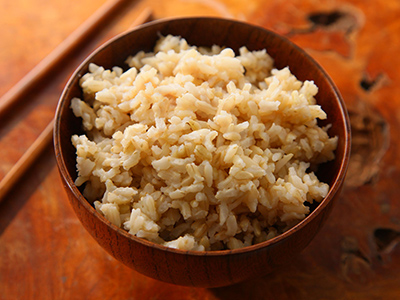
Soaking is recommended before cooking brown rice. If there is no time to soak, roast first. Roasting inactivates the enzyme inhibitors, boosts flavor, and produces a light and fluffy dish. These instructions are for a 2-quart pressure cooker. If using a 4-6 quart cooker, double the amounts.
- 2 cups short or long grain brown rice
- 2.5 to 3 cups water
- ⅛ tsp sea salt
Procedure – Wash and drain grain. Soak for the desired time in the full quantity of water. Add sea salt after soaking. Lock cover on pot. Set pressure according to pressure cooker instructions. Place cooker over medium-high heat. Bring to full pressure. Slip a heat diffuser under the cooker and turn heat to low. Cook at full pressure for the time indicated.
Yield: 6 cups for short rice; 6½ cups for long rice
Source: Ohsawa Macrobiotics
Heat Diffuser Info
Many of the macrobiotic recipes call for a heat diffuser. They can be purchased at Amazon, or any store well stocked with kitchen and cooking items. Here’s a link to a google search for heat diffusers for sale: Shop for Heat Diffuser.
If you don’t have one, you can make do with a pie plate and a stove top. In the following video, Kenzi Wilbur shows you how to hack a heat diffuser with a pie plate. By inverting your pie plate over the stove, you can create an even and thorough cooking surface that can also take the place of your double-boiler.
Boiled Brown Rice
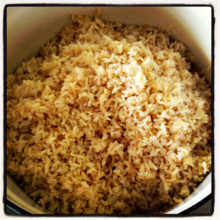 Brown rice (short or long grain) is a staple for many people who eat natural foods. Simple to prepare and complementary to most beans and vegetables, brown rice provides a foundation for building meals. Soaking is recommended before cooking brown rice. If there is no time to soak, roast first. Roasting inactivates the enzyme inhibitors, boosts flavor, and produces a light and fluffy dish.
Brown rice (short or long grain) is a staple for many people who eat natural foods. Simple to prepare and complementary to most beans and vegetables, brown rice provides a foundation for building meals. Soaking is recommended before cooking brown rice. If there is no time to soak, roast first. Roasting inactivates the enzyme inhibitors, boosts flavor, and produces a light and fluffy dish.
Ingredients:
- 2 cups brown rice
- 4 cups water
- ⅛ tsp sea salt
Procedure – Wash and drain brown rice. Soak 4 to 8 hours. Add sea salt after soaking. Cover. Bring to a boil. Simmer over low heat for 1 hour, using a heat diffuser if needed.
Yield: 6 cups for short rice, 6½ cups for long rice
Source: Ohsawa Macrobiotics
Split Pea Soup
- 2 cups split peas, boiled in 6 cups water
- 4 or more cups additional water
- 1 large onion, minced, 2 cups
- 2 medium celery stalks, quarter rounds, 1½ cups
- 2 medium carrots, thin quarter rounds, 1½ cups
- ½ tsp sea salt
- 5 tsp soy sauce, optional
Procedure – Boil split peas for 1 hour in 6 cups water until soft. Using the same pot, add the additional water. Mix with beans so water is at the bottom of the pot. Add vegetables. Sprinkle sea salt on top. Cover and bring to a boil. Simmer 30 minutes over low heat, using a heat diffuser if needed. Add soy sauce if used.
Yield: 10 cups
Source: Ohsawa Macrobiotics
Kitchari
Traditional Indian food for soothing diets. Nutritious and easily digested, Kitchari is simply rice and dahl cooked so thoroughly together that they make a creamy stew. This makes a good soup for an evening supper or a light meal while fasting. Total cooking time about 1 1/2 hours.
Ingredients:
- 1/4 cup mung lentils, cleaned and washed
- 1 1/2 cup water
- 1 teaspoon salt
- 1 teaspoon Vata Churna
- 1/4 cup rice
- 2 tablespoons ghee
- 1 1/4 cup water
- 1/4 teaspoon saffron (optional)
- 1 tablespoon ghee
- 1 teaspoon cumin
- 1 teaspoon mustard seeds
Bring water to a boil in a 2 quart pan. Add lentils, salt, and Churna. Cover and bring back to a boil, then reduce heat to ver low and simmer for about an hour.
Add rice, ghee, water, and saffron. Increase heat and bring to boil again. Then reduce to low and simmer for half an hour. Stir frequently to avoid sticking and add more water if it becomes too thick. Khichari should have the consistency of thick gravy. When ready to serve heat ghee in small pan with spices. When mustard seeds start to pop stir spices into Khichari and serve.
Serves 2 or 3
Source: The Ayurveda Cookbook
Ayurvedic Vata Churna
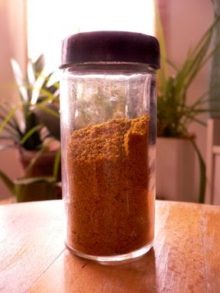 This is a recipe for a Vata Balancing spice mix, used in AyurVedic cooking. I make this churna in small batches and use it often in all my root veggie dishes and in soups as well. This spice powder has a robust deep flavor which perks up the dish and it tastes extra yummy when your vata is imbalanced. The specific spices used in this churna balance the vata dosha.
This is a recipe for a Vata Balancing spice mix, used in AyurVedic cooking. I make this churna in small batches and use it often in all my root veggie dishes and in soups as well. This spice powder has a robust deep flavor which perks up the dish and it tastes extra yummy when your vata is imbalanced. The specific spices used in this churna balance the vata dosha.
Ingredients:
- 2 tablespoons whole fennel seeds.
- 1 tablespoon whole coriander seeds.
- 1 tablespoon whole cumin seeds.
- 1 tablespoon ground turmeric.
- 1 tablespoon dried basil.
- 2 teaspoons powdered ginger.
- 2 teaspoons salt.
- 1 teaspoon asafetida (hing)
Store in a glass jar and it will stay fresh for up to a month.
Source: Rhythm of Healing
